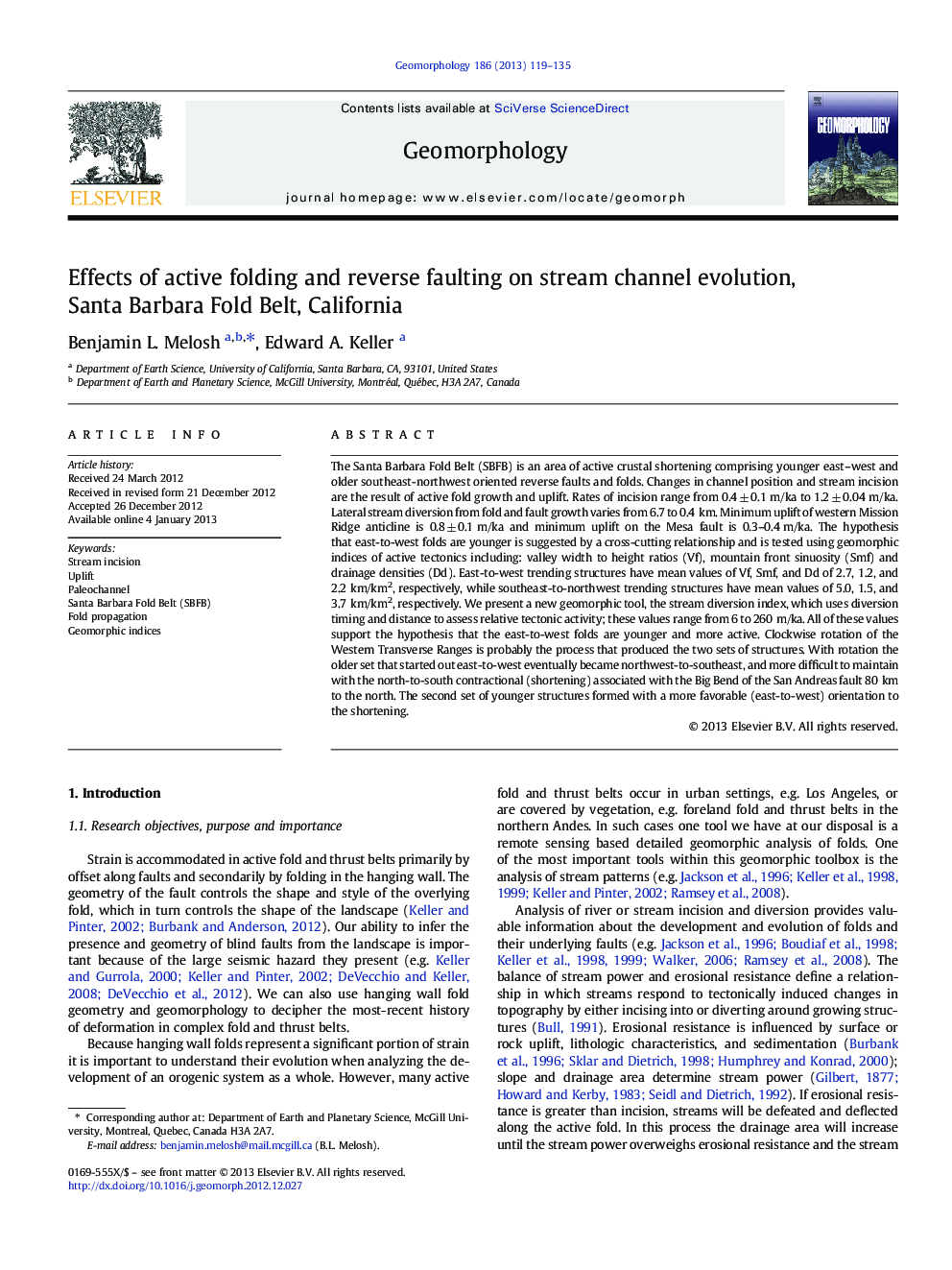| Article ID | Journal | Published Year | Pages | File Type |
|---|---|---|---|---|
| 4684991 | Geomorphology | 2013 | 17 Pages |
The Santa Barbara Fold Belt (SBFB) is an area of active crustal shortening comprising younger east–west and older southeast-northwest oriented reverse faults and folds. Changes in channel position and stream incision are the result of active fold growth and uplift. Rates of incision range from 0.4 ± 0.1 m/ka to 1.2 ± 0.04 m/ka. Lateral stream diversion from fold and fault growth varies from 6.7 to 0.4 km. Minimum uplift of western Mission Ridge anticline is 0.8 ± 0.1 m/ka and minimum uplift on the Mesa fault is 0.3–0.4 m/ka. The hypothesis that east-to-west folds are younger is suggested by a cross-cutting relationship and is tested using geomorphic indices of active tectonics including: valley width to height ratios (Vf), mountain front sinuosity (Smf) and drainage densities (Dd). East-to-west trending structures have mean values of Vf, Smf, and Dd of 2.7, 1.2, and 2.2 km/km2, respectively, while southeast-to-northwest trending structures have mean values of 5.0, 1.5, and 3.7 km/km2, respectively. We present a new geomorphic tool, the stream diversion index, which uses diversion timing and distance to assess relative tectonic activity; these values range from 6 to 260 m/ka. All of these values support the hypothesis that the east-to-west folds are younger and more active. Clockwise rotation of the Western Transverse Ranges is probably the process that produced the two sets of structures. With rotation the older set that started out east-to-west eventually became northwest-to-southeast, and more difficult to maintain with the north-to-south contractional (shortening) associated with the Big Bend of the San Andreas fault 80 km to the north. The second set of younger structures formed with a more favorable (east-to-west) orientation to the shortening.
